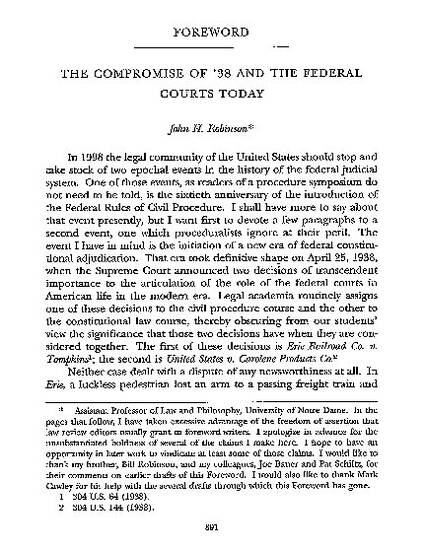
In 1998 the legal community of the United States should stop and take stock of two epochal events in the history of the federal judicial system. One of those events, as readers of a procedure symposium do not need to be told, is the sixtieth anniversary of the introduction of the Federal Rules of Civil Procedure. I shall have more to say about that event presently, but I want first to devote a few paragraphs to a second event, one which proceduralists ignore at their peril. The event I have in mind is the initiation of a new era of federal constitutional adjudication. That era took definitive shape on April 25, 1938, when the Supreme Court announced two decisions of transcendent importance to the articulation of the role of the federal courts in American life in the modem era. Legal academia routinely assigns one of these decisions to the civil procedure course and the other to the constitutional law course, thereby obscuring from our students view the significance that those two decisions have when they are considered together. The first of these decisions is Erie Railroad Co. v. Tompkins; the second is United States v. Carolene Products Co.
Available at: http://works.bepress.com/john_h_robinson/2/

Reprinted with permission of the Notre Dame Law Review.